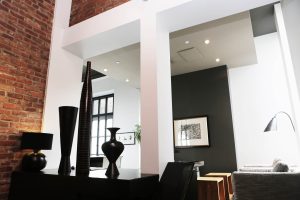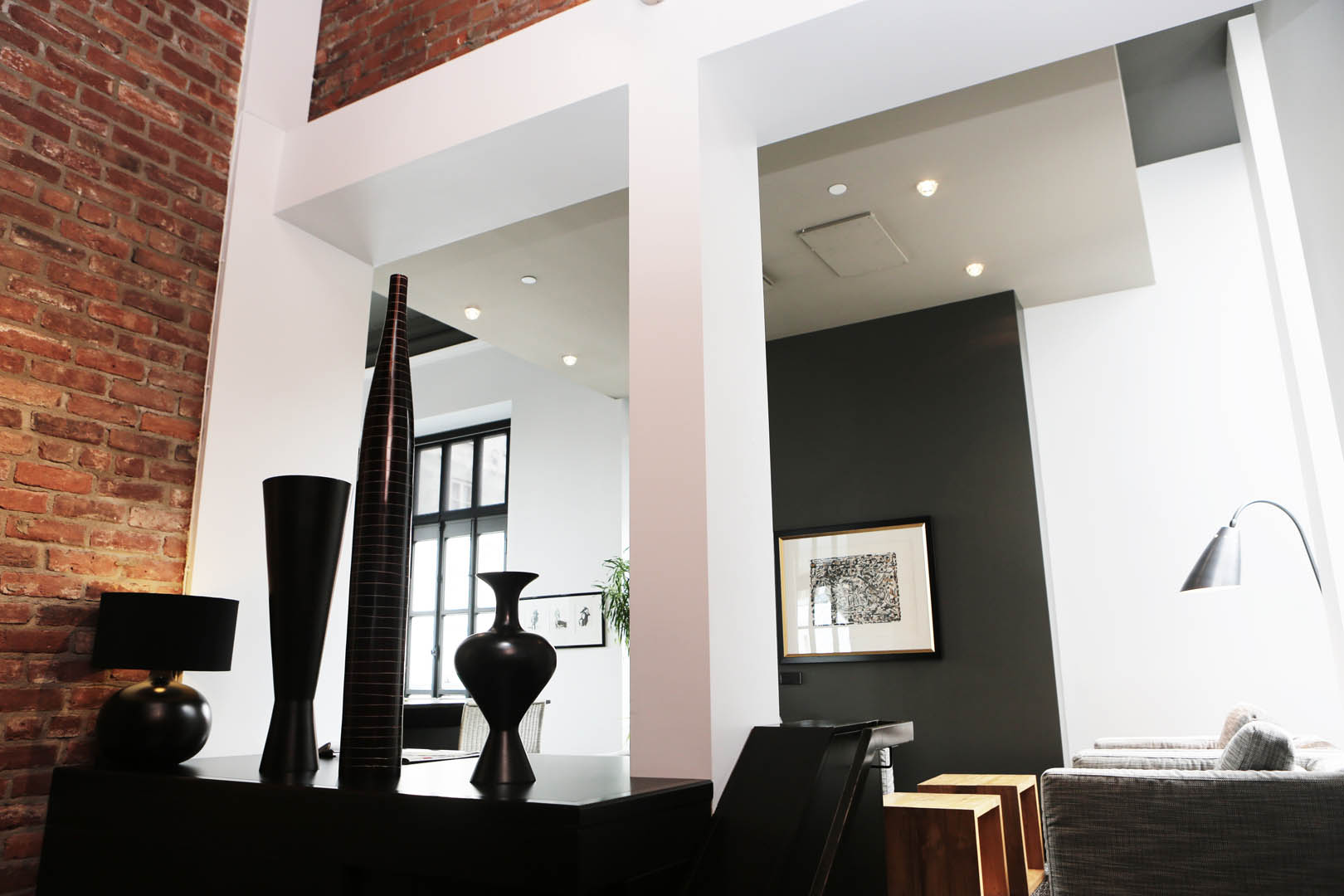
Proper lighting is a key element when it comes to the mood and design of your home. Get the most out of it by lighting it correctly. Not only do you want to use the appropriate lighting to complete certain tasks, but some lights and fixtures will bring a comfortable ambiance. Keep in mind what goals you may have for each room—do you need extra light to work in that room or are you looking for something more dim and cozy?
Rooms
Living Room
Try using a combination of table and floor lamps with a downward and/or upward glow. If you have overhead lighting, consider putting them on dimmers. The living room should be a relaxing space, not washed out by too much light. If you want to highlight artwork, plants, or other unique aspects of the living room, you can try spot lighting. And if you have high ceilings, you may want to consider a chandelier for elegance.
Dining Room
You should make the table the brightest spot in the room since it will be used the most. Try a chandelier or pendant light, depending on the size of the room and table. Find a fixture that’s about one-half or three-quarters the width of the table and it should hang about 36–48 inches above the table.
Kitchen
The kitchen is usually the busiest room in the house and calls for different types of lighting. On work surfaces, such as counters, use under-cabinet lights or pendant lights. You want the area to be fully illuminated so you can focus on the task at hand. You can also use higher watt bulbs in those task areas. Recessed downlights should be mounted over the sink and make sure any pendant lights clear the head of the tallest family member and doesn’t obstruct views.
Bedroom
This is where you want to create a very cozy atmosphere. Reading or table lamps should be used on either side of the bed. Make sure the bottom of the shade is just below your line of sight. You can try recessed or track lights in the bedroom, angled toward dressing areas, if you need brighter overhead lighting. For nurseries or kids’ rooms you should keep nightlights in mind or use low-light table lamps.
Bathroom
Lighting around a mirror is very important. Sidelights or sconces on either side are best to cast an even illumination across the face and avoid shadows. You can add overhead lights to fully illuminate the room for jobs like cleaning, and if you have a large bathroom, an overhead light is good to use directly over a shower.
Foyer, Hallways, Stairways
Foyers are often the first room a guest sees when he or she arrives. Choose a nice chandelier if you have a high ceiling. For foyers with low ceilings, try an elegant pendant light. Stairs and halls need good lighting for safety purposes. The stairs should be lit from top to bottom with switches at both ends. In hallways, place fixtures every 8–10 feet.
Exterior
Exterior lighting is also important for safety and security. All walkways, sidewalks, perimeter, and front entry of the home should be fully lit. But be careful not to make them too dim (a welcome call for intruders) or too bright (annoying for the neighbors). If you’re worried about trespassers, motion-activated flood lights on the exterior corners are a good choice. But exterior lighting doesn’t just have to serve a specific function, it can be decorative too. Use directional sconces to highlight architecture or other unique aspects of the home.
Types of Lights
Flush-Mount Fixtures
These closely hug the ceiling and should be used in the bathroom, kitchen, or any other room where you want full illumination. They’re also good for hallways, placed every 8–10 feet.
Semi Flush Fixtures
Semi-flush hang about a foot or so from ceiling. They add a bit of glamour but serve just about the same purpose as flush-mount lights. If you want to get away from simple, boring lights in hallways, these are a good option.
Pendant Lights
Pendants are any fixture that’s suspended from a chain or cord, such as a chandelier. They’re best over tables, counters, or in rooms with high ceilings.
Recessed Lights
Very simple fixtures embedded in the ceiling. They’re good for low ceilings because they’re inconspicuous.
Track Lights
Track lighting can serve many purposes because they’re adjustable and versatile. You can slide each light to where you want it and then angle it to hit a specific area. They’re good for highlighting collections, artwork, or other fun aspects.





